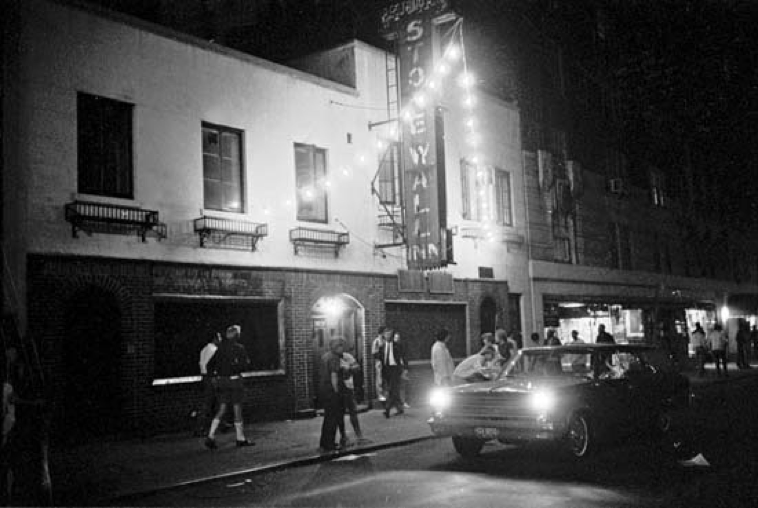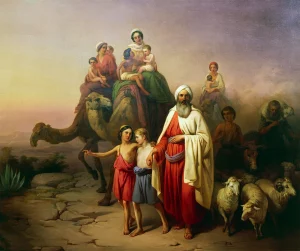Forced to retreat into the very establishment in which they were running people out off, the fearful and injured eight detectives were able to push and create a path for themselves. Once inside, they boarded the doors of the Stonewall Inn and called for backup. At the moment, the bar served as their only protection from the angry rioters outside. Before they knew it the Stonewall Inn, ironically their only sanctuary at the moment, was breaking. Windows around them were shattering and Molotov cocktails were thrown in. Flames, although not very strong, began to build around them.1 Soon after, the front door was broken down leaving the detectives exposed and vulnerable. One would agree that feelings of dread, lonesomeness, and hopelessness were the emotions that filled the detectives, as would anyone in their situation. However, these were familiar everyday feelings that the rioters outside had long felt. But how did we get to this moment?

On the hot summer day of June 28, 1969, a rather morbid atmosphere filled the air of the Stonewall Inn as people were mourning the recent death of Judy Garland, a popular actress known for her role as Dorothy in The Wizard of Oz. She was greatly adored in the gay community.2 Sadly, the gay community could not say that they felt any adoration or appreciation as Garland was receiving. What they felt was quite the opposite. This is why many gays frequented the Stonewall Inn. The Stonewall Inn, located in Greenwich Village, a neighborhood of Manhattan, New York, was a home to many homosexual individuals, as they could gather there free of social and political judgement. Outside of their safe haven, all hid their true identities and selves, putting on a façade for others to see. When some men were “outed” or labeled as being as homosexual, only true hell was to follow, with no light at the end of the tunnel. Homosexuals were treated as abominations by strangers, their own families, and even the law. The year 1952 marked the establishment of the McCarran-Walter Act. This act was a revision to an existing immigration law that allowed one to be deported, or to be denied entry to the country if one were a “psychopathic personality.” Conveniently, a homosexual fitted the profile of a psychopathic personality in the eyes of the law. Homosexuality was even treated as a mental disease at this time. Arrested homosexuals were often sent for psychiatric evaluation, and most were found as having psychotic tendencies and personalities. Psychologist and psychiatrist would perform counseling and treatments in order to “cure homosexuals and revert them back to their original state.” There were even extreme cases in which lobotomies were performed on homosexual individuals. However, people believed that science wasn’t the only method of treating homosexuality. The other treatment was religion and prayer. American church congregations had been taught to believe that homosexuality was a form of sin and that the devil was to blame. In order to rid oneself of sin and these temptations, one could “pray the gay away.” Although not to the same degree, we still see both these problems today, especially within the church. In 1969, one could even find themselves on the front page of the newspaper, shamefully describing their sexual orientation. Soon after, they would lose their job, insurance, credit, and family. Homophobia doesn’t discriminate, and all these problems were also known to effect homosexual women as well.3

The Stonewall Inn was also a popular spot where many came to illegally drink and dance. Bisexuals and drag queens also frequented the bar. At this time in the United States (1969), much like it is in current day Russia, it was illegal to cross dress, dress as a drag queen, and serve alcohol to homosexuals. These “laws” were constantly being broken; so, police would perform frequent raids on bars that they suspected of housing gays and ones that they thought were illegally serving alcohol without a license.4 On this specific night, the police obtained a warrant and were scheduled to perform a routine raid on the Stonewall Inn at around 2:00 AM, when the people inside would least expect it. The officers believed they were adequately prepared as no serious problems or resistance were known to occur when homosexuals were involved. Little did they know they were in for a rude awakening. As they barged into the bar, two bright-white lights flashed on the dance floor, a well-known signal within the gay community. This indicated to everyone that the police were present. Immediately, the eight detectives demanded for everyone to leave the bar, including the staff, and line up outside with their identification. The people inside, though angry and irritated, followed the orders given to them. With individuals lined up against the Stonewall Inn outside, a police wagon then pulled up, opened, and officers then began to arrest multiple drag queens, people without proper identification, and staff. As people were being detained, enraged onlookers yelled “Pigs,” “Abuse of Power,” and “Police Brutality” to the detectives. An uproar then followed. No one knows today who exactly started the riots, but one can agree that the community finally snapped. The years of abuse, the treatment directed to Lesbian, Gay, Bisexual, Transgender, and Queer (LGBTQ+) individuals, and the fact that they were to be arrested for being who they were, finally lead up to that moment. That was the moment when they had had enough. And at this moment, multiple people reported that a drag queen escaped from the hands of one of the detectives, turned around, and punched them in the face. This one punch would be responsible for starting a revolution.5
This action triggered almost everyone involved to begin throwing bottles, stones, and other objects at the detectives and their vehicles. As you can imagine, things only escalated from there, leading the police then to run back into the bar for shelter. Rioters managed to break off a parking meter and began to beat the door of the Stonewall with it. Once that shelter was breached, drag queens and homosexual men threw punches at the police as the police threw punches at them. Quickly word spread through the city and hundreds of onlookers, mostly from the LGBTQ+ community, gathered outside the bar. The uproar then continued to grow tremendously.

When reinforcements arrived, more specifically the Tactical Patrol Force, they fought head-on with all the rioters. The Tactical Police Force were dressed in helmets with visors and were in body armor. They also yielded tear gas, riot shields, and other weapons. The Tactical Police Force linked arms and attempted to sweep the streets clear of people but they inevitably failed. Their numbers were small compared to how many rioters were present. From this, they had no other choice but to charge into the crowd. Men and women were brutally clubbed to the ground, and police force members were injured from different objects being thrown and blunt force from rioters. It wasn’t until after 4 AM, that the police were officially withdrawn.6 However, the riots did not end. Some rioters were arrested and charged with assault, resisting arrest, selling alcohol without a license, harassment, and for many other reasons. Even after the withdrawal of the police, people roamed the streets and continued to gather together chanting their opinions on the police and everyday people.

The Stonewall Riots continued for days to come and grew more violent with each day. Once Greenwich Village was settled and calmer, many visited the Stonewall Inn to see the damage that was left as a result. Streets were filled with trash and graffiti was drawn on the Stonewall Inn with slogans stating, “Legalize gay bars.” Word spread across the United States of how LGBTQ+ members were tired of being oppressed and segregated, and how they would use violence if necessary, in order to be treated as equals. These riots, a foundational event, sparked many LGBTQ+ movements, gave people the confidence to oppose the government, and gave them the courage to demand that they be treated as humans and not as scoundrels. Slogans such a “gay power” and “homosexuals are human too” began to appear. In the following month of July, organizations that focused on the empowerment of gay individuals were established. The first is known as the Gay Liberation Front (GLF). Although, there are still problems being faced today within the LGBTQ+ community; such as transgendered rights, the Stonewall Rioters were key factors in their movement up the social and political ladder.7 What took place at the Stonewall Inn is a story that isn’t commonly shared or taught in history books or classes today. Regardless of the fact that the people directly involved are homosexual individuals, history is history, and it should be shared so that we are not doomed to repeat ourselves.
- Walter Frank, Law and the Gay Rights Story (New Jersey: Rutgers University Press, 2014), 32-39. ↵
- Encyclopedia of Lesbian, Gay, Bisexual and Transgendered History in America, 2004, s.v. “Stonewall Riots,” by Fred Wasserman. ↵
- Walter Frank, Law and the Gay Rights Story (New Jersey: Rutgers University Press, 2014), 22-31. ↵
- Encyclopedia of Lesbian, Gay, Bisexual and Transgendered History in America, 2004, s.v. “Stonewall Riots,” by Fred Wasserman. ↵
- Encyclopedia of Lesbian, Gay, Bisexual and Transgendered History in America, 2004, s.v. “Stonewall Riots,” by Fred Wasserman. ↵
- “4 Policemen Hurt in ‘Village’ Raid,” The New York Times, 29 Jun. 1969. ↵
- Scott Bravmann, “Stonewall, Silver Screen: Cinematic Representation and the Queer Past,” American Quarterly 48, no. 3 (September 1996): 491-499. ↵



74 comments
Christopher Metta Bexar
The article was well written though brief. I personally would have liked to see more. It is an urban legend that Stonewall was a reaction to the death of the legendary Judy Garland. In fact gays in the 1970s would refer to themselves as “friends of Judy”.
It is also true about the claims the author made about the treatment of LGBTQ+ people in the United States and elsewhere.It was still possible to be fired from employment with the federal government or dishonorably discharged from the military during the Johnson Administration.
Keily Hart
As a member of the lgbtq+ community, I am immensely grateful for the people who participated in these riots. They are largely responsible for my ability exist peacefully. It does make me sad to know that I don’t remember being taught about the Stonewall riots in school. The erasure of lgbtq+ history is a real issue that needs to be addressed. This article was very informative though.
Samantha Zamorano
This was such an informative article! Though I already knew about the Stonewall riots, this article got me to think about some things I’ve never even considered. For example, I had never heard of the McCarran-Walter Act. Immigration laws already have their fair share of discriminatory practices, but this Act takes bigotry to an entirely different level. To deny someone entry and/or deport them for having a psychopathic personality, which could really just be code for being queer, is beyond cruel. This article also made me realize that women were not exempt from homophobic practices. Finally, what I really took from this article was a breakdown of how the government would abuse their power to suppress others, specifically those who were queer. Creating a law that says, “homosexuals cannot be in this space” would come off as too radical. Instead, the law made it so that bars could lose their liquor licenses if there was any gay criminality being displayed (e.g., dancing, kissing). Losing their liquor license would put them out of business, so it was in their best interest to not come off as queer in any way. One more thing I’d like add for this amazingly written article, I believe the trans woman who incited the riots was Marsha P. Johnson!
Amanda Uribe
Until these past couple years, I’d never heard of the stonewall riots. It is terrifying to think that people had such terrible procedures performed on them. It is truly sad that the LGBTQIA+ community had to endure police raids for being true to who they are. I am so amazed to hear about their bravery and courage to stand up to the law enforcement. They fought through so much and many of them continued to fight even though they were being beaten and harassed. I think our society doesn’t truly realize what these people had to go through. These amazing people paved the way for equality and I know that equality still has a long way to go… but it starts with things like this to enact change.
Analisa Cervantes
I have heard of the Stonewall riots but not very many details until I read this. Like many riots before and after the Stonewall riots occurred as a result of persecution. The Stonewall riots serve as a reminder of the long and ongoing struggle the LGBTQ+ has faced over the decades. I like the fact the article starts at the climax which was the riot and then flashbacks to what lead to the riot.
Danielle Slaughter
Although I myself would never personally condone violence, at this time, the LGBT community had faced much hardship and dehumanization. I agree that this should be taught in school, just like any other facet of the Civil Rights Movement of the 1960s. Martin Luther King, Jr., Dolores Huerta and César Chávez, and the Stonewall rioters all played key roles in getting us where we are today. The road is still long ahead for LGBT, but now there is hope.
Shine Trabucco
This is a really interesting piece! I did not know of the Stonewall Riots until this piece. you do a really good job laying out the plot and telling the story of this incident and the sparks of others. I enjoy the opening of the articles and how the middle ties back then continue on with the story.
Sara Ramirez
Great article and I loved what you said at the end about this being a story not taught in history books, but it should be! The Stonewall Riots marked a turning point in the fight for LGBTQ rights and should be taught in classrooms. Most of the important events and figures that are most meaningful to me and relevant to the current social-political climate are either skimmed over or altogether left out of the history books. That needs to change and articles like these are compelling examples of history that should be remembered and preserved.
John Cadena
Another part of history I didn’t know about. The structure of this piece though really helped in understanding the story that was told. Similar to another story, I was able to extract key components of this narrative. That may have been due to me not knowing about this story, and as a result focusing in on it rather than taking the time to notice them. So with that said, I think it’s fare to say this was a well written piece in that it was so fluid and kept me so locked in, I didn’t want to stop to smell the flowers.
Edgar Velazquez Reynald
I’ve visited the Stonewall Inn and it was fascinating to be in a place where such an important event occurred in lgbtq history. There was a time when the event was being whitewashed (and it was exemplified with the movie Stonewall) where the actions by the trans women of color like Marsha P. Johnson were being downplayed. I’m glad to see she’s getting more and more recognition as the strong trans pioneer and activist she truly was.